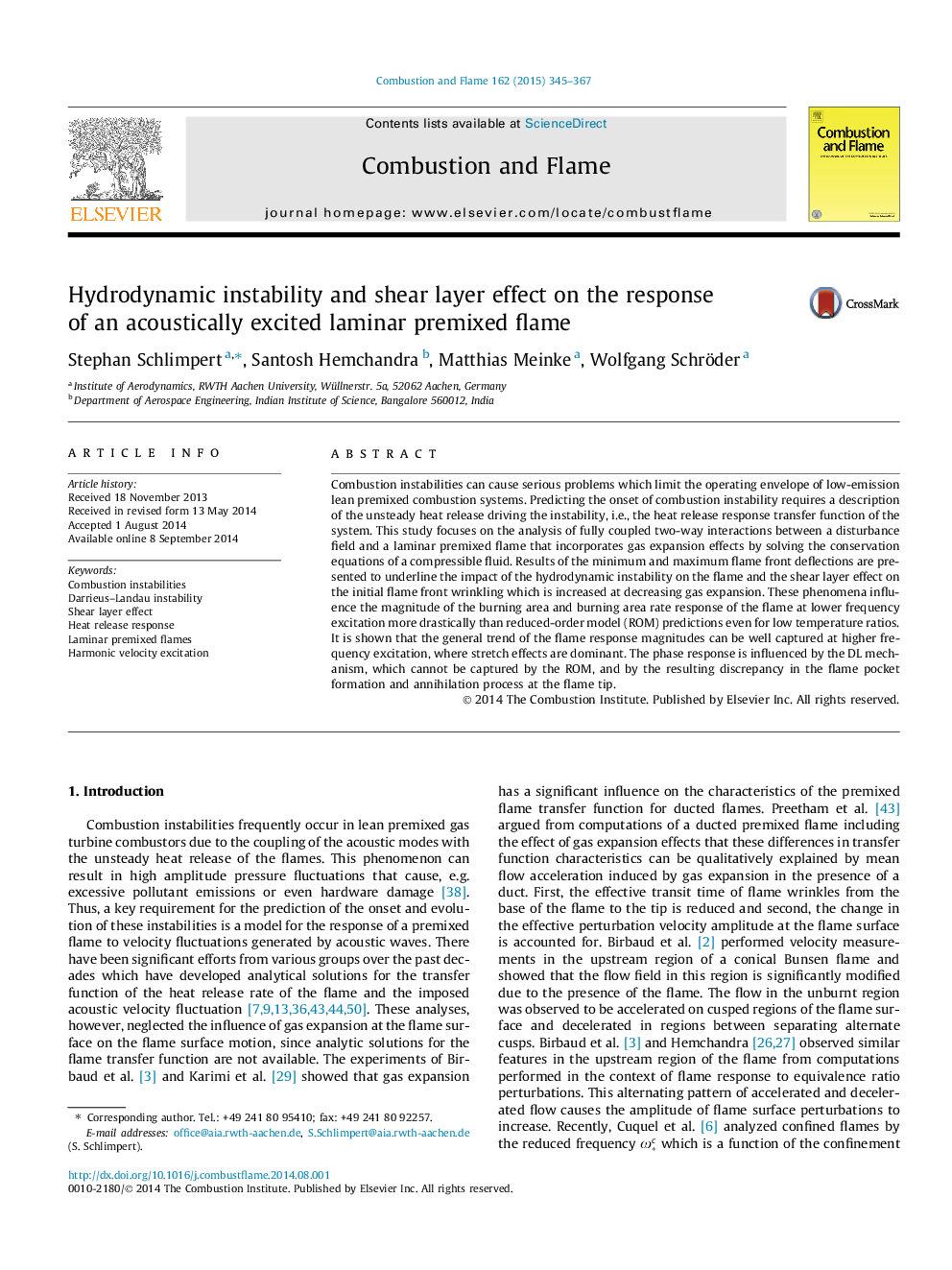| Article ID | Journal | Published Year | Pages | File Type |
|---|---|---|---|---|
| 168860 | Combustion and Flame | 2015 | 23 Pages |
Combustion instabilities can cause serious problems which limit the operating envelope of low-emission lean premixed combustion systems. Predicting the onset of combustion instability requires a description of the unsteady heat release driving the instability, i.e., the heat release response transfer function of the system. This study focuses on the analysis of fully coupled two-way interactions between a disturbance field and a laminar premixed flame that incorporates gas expansion effects by solving the conservation equations of a compressible fluid. Results of the minimum and maximum flame front deflections are presented to underline the impact of the hydrodynamic instability on the flame and the shear layer effect on the initial flame front wrinkling which is increased at decreasing gas expansion. These phenomena influence the magnitude of the burning area and burning area rate response of the flame at lower frequency excitation more drastically than reduced-order model (ROM) predictions even for low temperature ratios. It is shown that the general trend of the flame response magnitudes can be well captured at higher frequency excitation, where stretch effects are dominant. The phase response is influenced by the DL mechanism, which cannot be captured by the ROM, and by the resulting discrepancy in the flame pocket formation and annihilation process at the flame tip.
